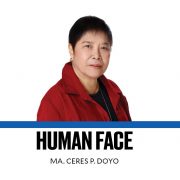Asean must do more to protect children vs online abuse

Denpasar—Across Southeast Asia, from Manila to Bangkok and Phnom Penh, police are struggling to keep children safe from sexual exploitation and abuse, particularly online. Every day, millions of images and videos of children are shared on the internet, while authorities are increasingly at a loss of what to do.
Behind these numbers are real girls and boys whose lives may never be the same again. Governments and law enforcement in Asean countries both can and must do more to stem this tide of abuse. Child sexual exploitation is rising alarmingly in the region; we need urgent action now.
A meeting in Bali this week presents an opportunity to do just that. On Sept. 25-27, representatives from government, law enforcement, the private sector, and others gather for the third annual Asean ICT Forum on Child Online Protection.
The discussions must focus on new strategies to counter the exponential increase in online child sexual exploitation and abuse (OCSEA) in Southeast Asia and on the role of law enforcement in particular. Police and other authorities should reaffirm commitment to work more closely with nongoverment organizations, tech companies, and community groups to build a united front against child sexual exploitation.
The summit in Bali comes on the back of some encouraging initiatives in the region. In 2019, for example, Asean member states adopted the Declaration on the Protection of Children from All Forms of Online Exploitation and Abuse. While we have seen some positive developments since, there is still much more that can be done.
OCSEA is a particular issue in Asia, which is home to the highest rate of child internet users in the world. A major study in 2022, coled by rights group ECPAT, the United Nations Children’s Fund, and the International Criminal Police Organization with support from SafeOnline, revealed the alarming scope of the problem.
In the Philippines, 20 percent of children aged 12-17 said they had experienced sexual abuse online. The figure stood at 11 percent in Cambodia, 9 percent in Thailand, 4 percent in Malaysia, 2.2 percent in Indonesia, and 0.7 percent in Vietnam.
Perpetrators are using the internet not only to share sexually explicit images of children, but also to target them for abuse and exploitation. More than half of all child victims said they were first approached online, mainly through social media or gaming platforms.
Too often, online abuse often translates into real life, as perpetrators try to get children to meet in person.
Despite the scale of the problem, law enforcement is struggling to keep up. They lack the tools and resources to take on criminals in the digital sphere, including dedicated units and robust reporting systems. Officers also rarely receive specialized training on preventing and responding to child sexual abuse.
Countering OCSEA is not just about money and resources for policing, however: It is about building trust with communities and ensuring that children feel safe enough to approach authority figures without fear of being judged. A huge part of this is about changing mindsets and challenging harmful, cultural taboos.
We have interviewed child victims and survivors across Southeast Asia who said they were reluctant to approach police or other authorities to report crimes because they were worried about being blamed. More than one-third of child victims and survivors said such fears meant they had not disclosed the crimes to anyone.
As a result, we saw children who feel ashamed about what happened to them. One girl survivor said, “When I told [the police] my problem, they were blaming me, asking me why I would do such a thing and why I behaved like that.”
All survivors of OCSEA are victims. They have the right to access support and justice, and should not be retraumatized or made to feel like criminals. Law enforcement and judicial officers must treat all children who approach them with respect, and always avoid putting the blame on victims.
We must also remember that OCSEA can affect any child. It does not discriminate across age, gender, or socioeconomic lines. In fact, our research shows that both boys and girls are equally targeted, and that there are as many victims in rural as urban areas. It also demonstrates that the vast majority of offenders of online sexual abuse come from the circle of trusted individuals around children, rather than strangers on the dark web.
Asean governments must adapt their strategies to these facts and ensure that their services are sensitive to the rights of all victims. Localized, community approaches must be available to engage children and their families.
We also encourage all Asean member states to establish OCSEA units and train and equip specialized officers with the technology, skills, and resources to tackle the breadth of the problem while ensuring that children receive justice and support, including in rural areas.
This week’s Asean ICT Forum in Bali is a crucial opportunity for the region’s leaders to better protect children online, and it is one they must take. The Jakarta Post/Asia News Network
Guillaume Landry is executive director of ECPAT International.

















